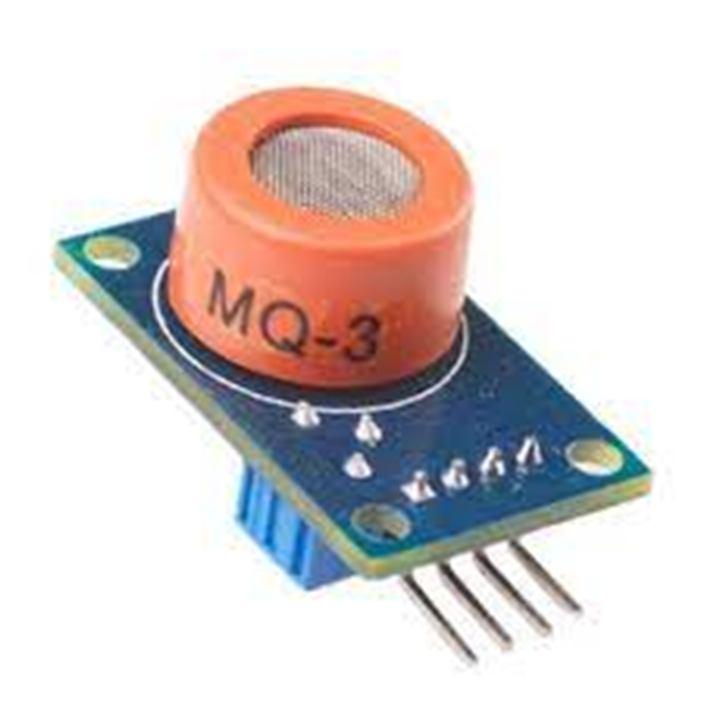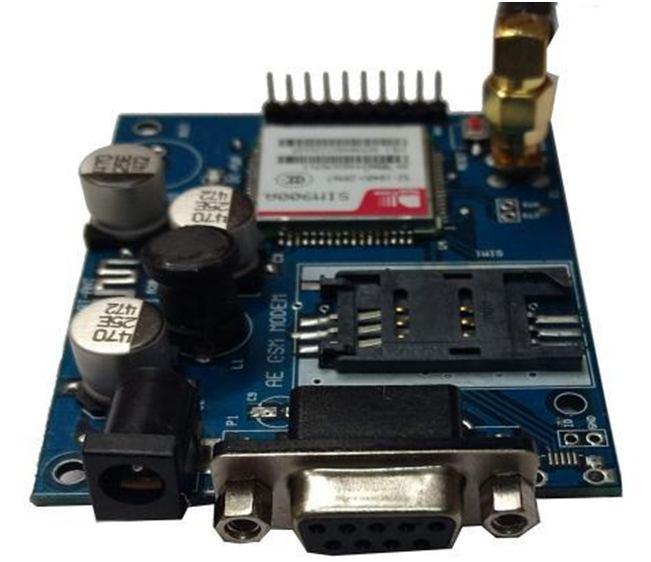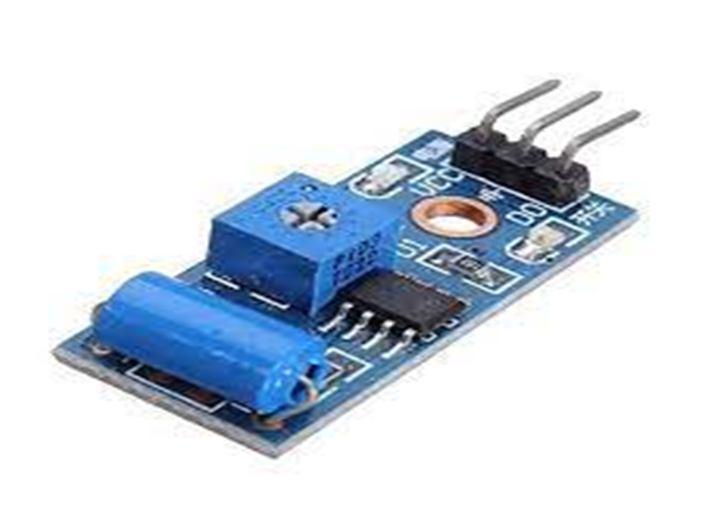
ISSN: 2321-9653; IC Value: 45.98; SJ Impact Factor: 7.538 Volume 10 Issue XII Dec 2022- Available at www.ijraset.com


ISSN: 2321-9653; IC Value: 45.98; SJ Impact Factor: 7.538 Volume 10 Issue XII Dec 2022- Available at www.ijraset.com
Abstract: The usage of a smart helmet, a sort of protective headgear, increases the rider's level of safety when operating a motorcycle. This helmet's primary function is to keep the rider safe. Advanced features like fall detection, accident identification, location monitoring, and alcohol detection can be used to accomplish this. As a result, it doubles as a smart bike feature in addition to being a smart helmet. The ignition switch cannot turn ON without the helmet being worn, hence it is required. An RF Module can be used as a wireless link for transmission and reception. When a rider is intoxicated, the ignition locks itself and sends a message with his location to the registered phone number.In the event of an accident, it will send a message over GSM and provide its location using a GPS module. Fall detection is the project's standout feature; if the rider falls off the bike, a notice is sent.
Keywords: GSM module,GPS, accident detection, alcohol detection
The first step is to identify whether the helmet is worn or not. If helmet is worn then ignition will start otherwise it remains off. For this, Force Sensing Sensor (FSR) sensor is used. The second step is alcohol detection[2]. Alcohol sensor is used as breath analyser which detects the presence of alcohol in rider’s breath and if it exceeds permissible limit ignition cannot start. It will send message to the number saying that “Rider is drunk and is trying to ride the bike”. MQ-3 sensor is used for this purpose. When these two conditions are satisfied then only ignition starts.
The third main issue is accident and late medical help. If the rider has met with an accident, he may not receive medical help instantly, which is one of the main reasons for death. Every second people dies due to delay in medical help, or in the case where the place of accident is unmanned. In fall detection, we place accelerometer in the bike unit. By this mechanism accidents can be detected.

A. Mehala Chandran, Nur Fadila Mahrom , Thennarasan Sabapathy, Muzammil Jusoh , Mohd Nasrun Osman , Mohd Najib Yasin, N.A.M Hambali , R.Jamaluddin , N.Ali , Yasmin Abdul Wahab. –This proposed system is employed to point the user about the vacancy of the parking slots. A user can choose the parking squeeze advance, rather than waiting in area of the parking, where the parking availability are shown through user’s smart phones.
IR Sensors are going to be attached in each slot for detecting the vacancy. The signal from the sensors captured by Arduino and these signal is then converted from electrical signal into another form to detect presence of car in terms of the number of sunshine reflected back from the obstacle like wall of the car parking zone. The output from Arduino depends on the measurement of amount of sunshine and supported that, slot’s allocation is finished. On the opposite hand, the output from Arduino is modified into text format and is sent.
B. Megha Gupta, Arefa Shaikh, Snehal Jare, Yashi Thakur, “SMART HELMET– A Review Paper”, ISSN: 2455-2631 November 2018 IJSDR | Volume 3, Issue 11 –

Their project's goal is to create an inexpensive, intelligent helmet that can detect alcohol intake and stop car accidents. The primary goal of this intelligent helmet is to protect the rider. This is accomplished by utilising cutting-edge features including fall detection, accident recognition, position monitoring, and alcohol detection.
Helmet use is required for this project; the ignition switch cannot turn on without one. When a rider is intoxicated or an accident occurs, the ignition switch is automatically locked, and a message containing the rider's current location is sent to their registered phone number. It offers the ability to accept calls over Bluetooth while driving

ISSN: 2321-9653; IC Value: 45.98; SJ Impact Factor: 7.538 Volume 10 Issue XII Dec 2022- Available at www.ijraset.com
C. M. N. Mohammed, Halim Syamsudin , S. Al-Zubaidi3 , Sairah A.K., Rusyaizila Ramli4 , Eddy Yusuf5, “Novel Covid-19 Detection And Diagnosis system using IOT based Smart Helmet”, International Journal of Psychosocial Rehabilitation, Vol. 24, Issue 7, 2020. –In this study, a design for a smart helmet-mounted thermal imaging system is proposed that can automatically identify the coronavirus from a thermal image with minimal human input. In order to monitor the screening process and obtain real-time data, the thermal camera technology is integrated into the smart helmet and linked with IoT technology. The suggested system also has facial recognition technology, which enables it to show the pedestrian's personal information and automatically take their temperature. The healthcare system will be put under a lot of strain by the suggested design, which may also help stop the coronavirus from spreading further.
D. Mateus Coelho Silva, Servio Pontes Ribeiro, Saul Delabrida, Ricardo Augusto Rabelo
Paper · July 2019. –They have offered a novel method to improve environmental perception in this paper. The suggested device is an embedded wearable system built into a helmet that is intended to collect environmental data. Additionally, it enables the creation of fresh applications to broaden the researcher's vision of reality. Additionally, the process of creating a unique wearable device to improve environmental awareness in field studies of forests. The architecture proposal is where this process begins, using sensing nodes based on the Internet of Things idea. Then, we demonstrate a finished prototype. Finally, we created a programme that enables a wider perception of the surroundings.
SIM900 GSM module contains different sensors and a transmitter Circuitry. Microcontroller contains three sensors which are alcohol sensor, vibrate sensor and IR sensor. Alcohol sensor has been utilized to recognize the alcohol focus. The alcohol sensor will be put close to the mouth of the rider, inside the helmet. Vibrate sensor is utilized for crash location. Another microcontroller contains two sensors which are pulse sensor and UV sensor. Pulse sensor has been utilized for measuring of pulse rate. When the pulse rate increases it stimulates LED1 which blinks white light. UV sensor will sense the front moving vehicle to avoid collision also controlling the accident. If any vehicle detected near to our vehicle LED2 is activated which blinks red light. A RF transmitter which can transmit information from any controller or standard Encode IC has been utilized. The RF transmitter transmits information from the microcontroller on the helmet side to the recipient on the vehicle side through transmit antenna. SIM900 GSM module contains different sensors and a transmitter Circuitry. Microcontroller contains three sensors which are alcohol sensor, vibrate sensor and IR sensor. Alcohol sensor has been utilized to recognize the alcohol focus. The alcohol sensor will be put close to the mouth of the rider, inside the helmet. Vibrate sensor is utilized for crash location. Another microcontroller contains two sensors which are pulse sensor and UV sensor. Pulse sensor has been utilized for measuring of pulse rate. When the pulse rate increases it stimulates LED1 which blinks white light. UV sensor will sense the front moving vehicle to avoid collision also controlling the accident. If any vehicle detected near to our vehicle LED2 is activated which blinks red light. A RF transmitter which can transmit information from any controller or standard Encode IC has been utilized. The RF transmitter transmits information from the microcontroller on the helmet side to the recipient on the vehicle side through transmit antenna.

1) Accelerometer ADXL345: The ADXL345 is a tinny, tri-axial accelerometer with resolution of 13 bit. The output of accelerometer is digital and uses 16 bit 2’s complement data. It can be connected via Serial Peripheral Interface (SPI 3-4 wire) or I2C interface. ADXL345 is used for both measurement of static and dynamic acceleration. In this project we use accelerometer, which measures the static acceleration of gravity. Free-fall sensing unit senses if the bike is falling. And Bike unit take decision that accident is occured or not.

ISSN: 2321-9653; IC Value: 45.98; SJ Impact Factor: 7.538 Volume 10 Issue XII Dec 2022- Available at www.ijraset.com

2) MQ 3 Alcohol Sensor: MQ-3 gas sensor shown in Figure 2 is used for identifying the alcohol content from breath. It can be positioned just in front of the mouth. The sensor responds to various molecules in alcohol and determines if the rider is drunk. The sensor also has a potentiometer to adjust the concentration of gases. We calibrate the detector for 0.4mg/L of alcohol concentration in air and use a resistance of 200 KΩ. It has a 4 pins namely GND, VCC, A out and D out. The sensor supports both analog and digital outputs. Here we use digital output of this sensor.
Figure2. MQ 3 Alcohol sensor

3) SIM900 GSM Module : The SIM800A is a complete Quad-band GSM/GPRS solution in a SMT module which can be embedded in the customer applications. Featuring an industry-standard interface, the SIM900 delivers GSM/GPRS 850/900/1800/1900MHz performance for voice, SMS, Data, and Fax in a small form factor and with low power consumption.
Figure3. SIM900 GSM Module


4) Vibration Sensor: Digital vibration sensor (Figure 5, DFR0027) is a digital Plug and Play sensor block. It has vibration switch, digital input module and dedicated sensor expansion boards with the Arduino in combination. It can sense the weak vibration signals. When the accident occurs, it senses the pressure and sends it to the Arduino which in turn it sends the message to the registered mobile number.
Figure4. Vibration Sensor

ISSN: 2321-9653; IC Value: 45.98; SJ Impact Factor: 7.538 Volume 10 Issue XII Dec 2022- Available at www.ijraset.com

Figure5. Results for alcohol detection


Figure6. Results for accident happened

The designed smart helmet ensures the safety of the rider by making it necessary to wear helmet, and also ensures that the rider hasn’t consumed alcohol more than the permissible limit. if any of these prime safety rules are violated, the proposed system will prevent the biker from starting the bike. the system also helps in efficient handling of the aftermath of accidents by sending a sms with the location of the biker to the police station. this ensures that the victims get proper and prompt medical attention, if he/she met with an accident.

ISSN: 2321-9653; IC Value: 45.98; SJ Impact Factor: 7.538 Volume 10 Issue XII Dec 2022- Available at www.ijraset.com
[1] Kesari shravya's, ‘smart helmet for safe driving’ in 2019,K.hari babu, m.akhila, c.poojitha, b.meghana, ‘smart helmet using and gate’.
[2] Shravya, Keesari, Yamini Mandapati, Donuru Keerthi, Kothapu Harika, and Ranjan K. Senapati. "Smart helmet for safe driving." In E3S web of conferences, vol. 87, p. 01023. EDP Sciences, 2019.
[3] Deekshitha K I, Mrs. Pushpalatha S, IOT BASED Smart Helmet, in 2018.
[4] Divyasudha, N., P. Arulmozhivarman, and E. R. Rajkumar. "Analysis of Smart helmets and Designing an IoT based smart helmet: A cost effective solution for Riders." In 2019 1st International Conference on Innovations in Information and communication Technology (ICIICT), pp. 1-4. IEEE, 2019.
[5] Vashisth, Rashmi, Sanchit Gupta, Aditya Jain, Sarthak Gupta, and Prashant Rana. "Implementation and analysis of smart helmet." In 2017 4th International Conference on Signal Processing, Computing and Control (ISPCC), pp. 111-117. IEEE, 2017.
[6] Manjesh N., Sudarshan Raj, Smart Helmet using GSM & GPS Technology for Accident detection and Reporting System, International Journal of Electrical and Electronics Research, 2, 4 (2014).

[7] Abhinav Anand, Alcoholic detection, Department of Electronics and Telecommunications, IJEETC, 2015.
[8] Mohd Khairul, Afiq Mohd Rasli, Smart Helmet with sensors for accident prevention, ICEESE, 2013.
